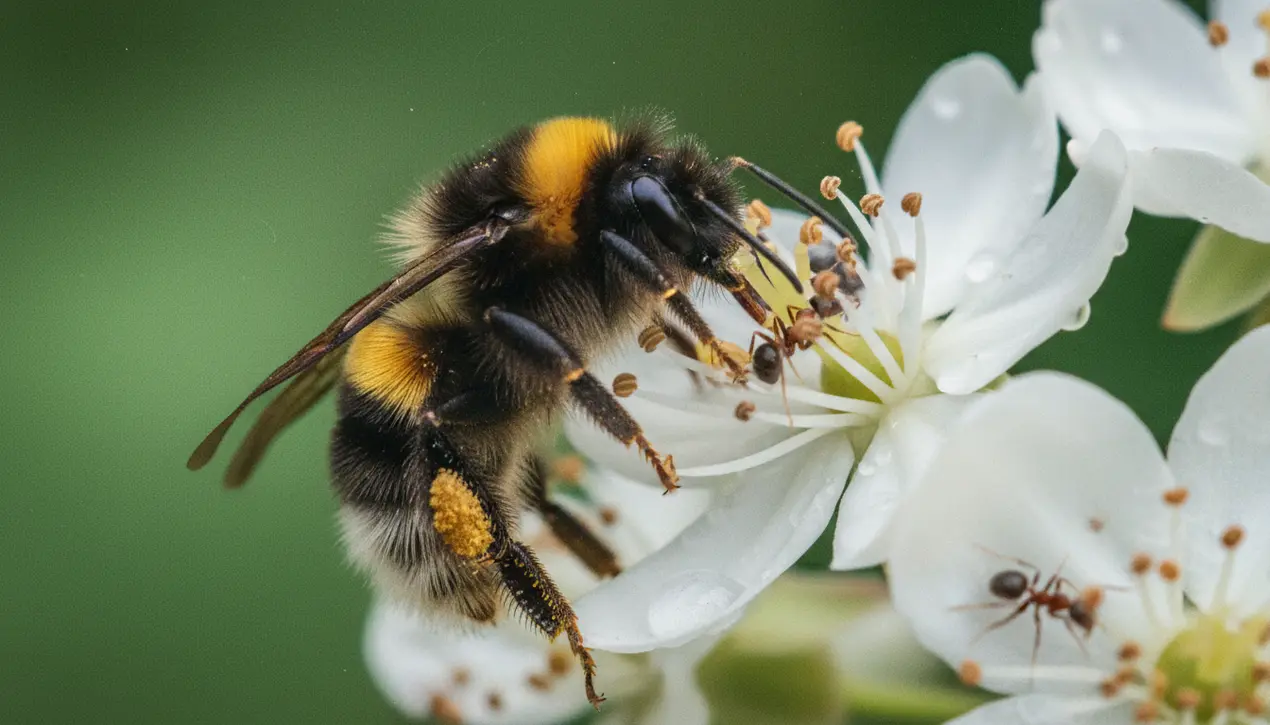
SciencebiologyEvolution and Ecology
Nectar wars between bumble bees and invasive ants drain the hive
RA
Rachel Adams
4 hours ago7 min read2 comments
In the quiet, intricate world of pollination, a silent war is being waged with consequences that ripple far beyond the flower patch. New research reveals that bumble bees, those fuzzy, industrious icons of temperate ecosystems, are locked in a draining conflict with invasive Argentine ants, a struggle where winning a battle can mean losing the war for the hive's survival.While a bumble bee's substantial size and strength often allow it to physically dominate an Argentine ant in a one-on-one skirmish—easily flicking the tiny intruder off a blossom—these fleeting victories come at a steep cost. The encounters trigger prolonged, aggressive harassment from the ant colonies, creating an environment of such persistent hostility that bees begin to avoid ant-occupied feeders altogether.This isn't merely an inconvenience; it's a critical drain on foraging efficiency, stealing precious time and energy from a colony's vital food-gathering missions. This added pressure arrives at a moment of profound vulnerability for bumble bees, populations already buckling under the cumulative stressors of widespread habitat fragmentation, exposure to a cocktail of agricultural pesticides, and the silent spread of pathogens.The Argentine ant, Linepithema humile, is a global invader of the highest order, notorious for forming massive supercolonies that overwhelm native insects from the Mediterranean to California. Their success lies not in individual prowess but in relentless numbers and a highly cooperative, aggressive nature.For a bumble bee colony, a successful season hinges on the relentless labor of its foragers. Every moment spent evading ants or engaging in defensive tussles is a moment not spent collecting nectar and pollen, the essential fuels for brood rearing and temperature regulation.This is an ecological story of a death by a thousand cuts, where the most immediate threat isn't always a direct killer but a systematic disruptor. Experts in pollination ecology point to this as a classic example of an 'indirect competition' mechanism, where an invasive species doesn't necessarily outcompete a native one for resources directly but instead alters its behavior so severely that it effectively locks it out of its own niche.The consequences extend beyond the bees themselves; the reduced foraging efficiency can lead to weaker colonies that produce fewer new queens at the end of the season, diminishing the population's resilience and its capacity to rebound the following year. In a world grappling with an insect apocalypse and a pollination crisis, understanding these complex, sub-lethal interactions is no longer academic—it is urgent. The fight between a bumble bee and an ant on a single flower is a microcosm of the larger, interconnected battles being fought across our changing planet, where the smallest conflicts can tip the balance for entire ecosystems.
#featured
#bumble bees
#invasive ants
#foraging behavior
#colony stress
#ecological impact
#nectar competition
Stay Informed. Act Smarter.
Get weekly highlights, major headlines, and expert insights — then put your knowledge to work in our live prediction markets.
Related News
Comments
Loading comments...
© 2025 Outpoll Service LTD. All rights reserved.